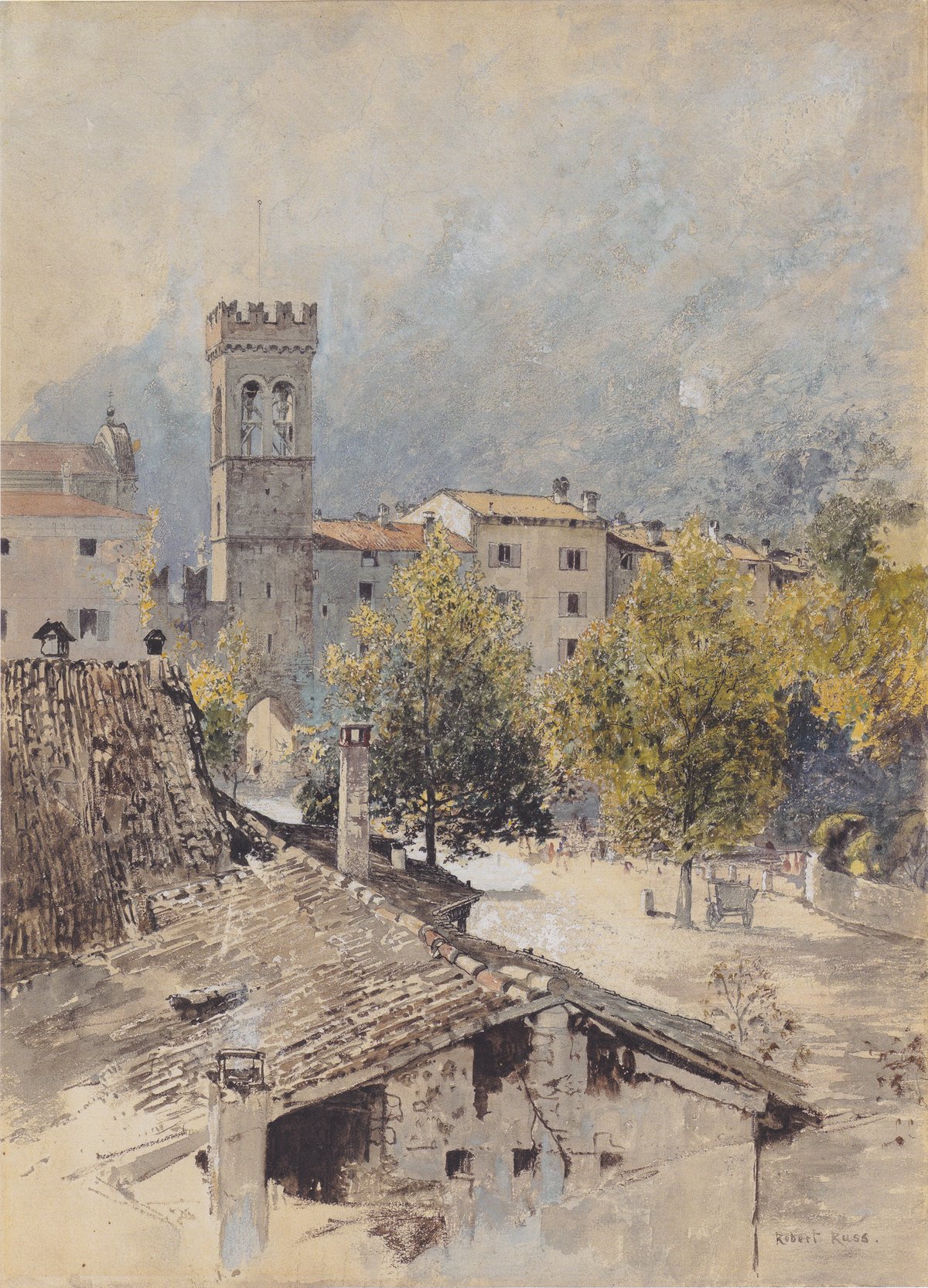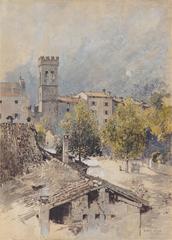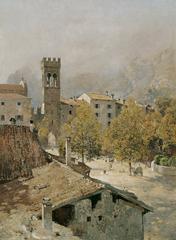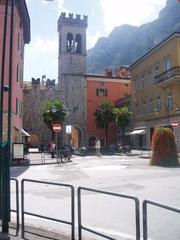
City Gates of Riva del Garda: Visiting Hours, Tickets, and Historical Sites Guide
Date: 14/06/2025
Introduction: The Historic Gates of Riva del Garda
At the northern tip of Lake Garda, Riva del Garda stands as a vibrant town where the echoes of history resonate through medieval streets and ancient stone portals. The city’s famed gates—Porta San Marco, Porta San Michele, and Porta Bruciata—are not only surviving fragments of centuries-old fortifications but also living witnesses to a past shaped by trade, defense, and shifting empires. Built primarily in the 13th and 14th centuries, these gates have guarded the town through eras governed by the Scaligers, Venetians, Austrians, and others, each leaving their mark on both architecture and local identity.
Today, these gates are freely accessible, seamlessly integrated into the urban landscape, and serve as evocative entry points to Riva’s charming historic center. In this detailed guide, you’ll find everything you need to know about their history, architectural features, cultural importance, practical visiting tips, and nearby attractions. Resources such as Italy Heaven, gardatourism.it, and rossiwrites.com offer additional context and up-to-date information.
Table of Contents
- Introduction
- Medieval Origins and Defensive Role
- The Principal City Gates
- Shifting Borders and Political Significance
- Architectural Features and Preservation
- Cultural and Urban Significance
- Visiting Hours, Tickets, and Accessibility
- Visitor Experience and Travel Tips
- Nearby Attractions
- Frequently Asked Questions (FAQs)
- Conclusion and Legacy
Medieval Origins and Defensive Role
Riva del Garda’s city gates are among the most evocative reminders of its medieval fortifications. Positioned strategically at the northern end of Lake Garda, the town was historically a crossroads for trade and military movements between Italy and the Alps. The earliest city walls and gates, dating from the 13th and 14th centuries, guarded against invasions and controlled commerce. These structures served as customs checkpoints and defensive barriers in times when borders were frequently contested by powers such as the Republic of Venice, the Bishopric of Trent, and the Scaliger family (Italy Heaven).
The Principal City Gates
Porta San Marco
Constructed in the 14th century, Porta San Marco reflects the influence of the Venetian period, with Renaissance embellishments and symbols such as the Clesio family’s lions visible on its façade. Originally forming part of the town’s southern defenses, the gate now houses the Mountaineers Society (SAT), exemplifying the adaptive reuse of Riva’s historic structures (gardatourism.it; Tara Oh Reilly).
Porta San Michele
Dating from the 13th century, Porta San Michele, once called “Porta d’Arco,” was the northern entrance to the old town. In the 19th century, it was ingeniously adapted as the bell tower for the adjacent Church of Santa Maria Assunta, blending its medieval origins with later religious significance (gardatourism.it; Italien Inside).
Porta Bruciata
Less ornate but equally significant, Porta Bruciata is associated with the Della Scala family’s rule in the late Middle Ages. Its name—meaning “Burnt Gate”—recalls the town’s turbulent history of sieges and fires (Italien Inside).
Shifting Borders and Political Significance
Over centuries, Riva del Garda’s city gates have witnessed the town’s passage through varied political dominions: Venetian, Napoleonic, and Austro-Hungarian, among others (Wikipedia). These changes are reflected in the gates’ evolving appearance and symbolism. For example, during the Third Italian War of Independence in 1866, Riva was a key Austrian naval base and the only Lake Garda town captured by Italian forces. The gates, therefore, embody the resilience and adaptability of the local community.
Architectural Features and Preservation
Despite the disappearance of much of the original city walls, Riva’s gates are well-preserved and actively maintained. Built from local stone and featuring arched passageways and, in some cases, defensive towers, the gates display a blend of medieval and Renaissance styles. Unique features, such as the Venetian lions on Porta San Marco or the bell tower adaptation of Porta San Michele, highlight the gates’ layered history (Tara Oh Reilly). Their current preservation reflects both community pride and modern heritage management.
Cultural and Urban Significance
The city gates transcend their defensive origins to serve as integral elements of Riva del Garda’s urban character. They frame the entrances to the old town’s narrow lanes and lively squares, providing a sense of continuity between past and present (Italy Heaven). Their locations, near important landmarks like Piazza Cavour and the Church of Santa Maria Assunta, make them natural starting points for exploration and orientation within the city (Italien Inside).
Visiting Hours, Tickets, and Accessibility
- Visiting Hours: The city gates are publicly accessible all day, year-round, as they form part of Riva del Garda’s pedestrian network.
- Tickets: No entry fee is required; access is free.
- Accessibility: Located within the largely flat, pedestrianized old town, the gates can be visited by all, including families and those with mobility challenges. Some adjacent streets are cobbled but generally accessible.
For those interested in more in-depth exploration, local tour operators offer guided walking tours that include the gates and other historic sites—booking in advance is recommended.
Visitor Experience and Travel Tips
- Photography: Early morning and late afternoon provide the best natural light for photographing the gates’ architectural details.
- Interpretation: Join a walking tour for historical context, as on-site signage may be limited.
- Combine Visits: Pair your gate exploration with nearby attractions like the Rocca di Riva fortress, Torre Apponale, or the scenic lakeside promenade (Visit Trentino).
- Seasonal Tips: Spring and autumn offer pleasant weather and fewer crowds compared to the summer peak.
Nearby Attractions
- Rocca di Riva: A medieval fortress now housing the Museum of Upper Garda.
- Piazza III Novembre: The vibrant main square, accessible from both main gates.
- Santa Maria Assunta: A baroque church adjacent to Porta San Michele.
- Lakeside Promenade: A relaxing stroll along Lake Garda’s northern shore.
These sites are all within easy walking distance, making it convenient to experience Riva del Garda’s rich heritage in a single visit (rossiwrites.com; atickettotakeoff.com).
Frequently Asked Questions (FAQs)
Q: What are the visiting hours for the city gates?
A: The gates are always open to the public, as they are part of the town’s streets and squares.
Q: Is there an entry fee?
A: No, visiting the city gates is free.
Q: Are guided tours available?
A: Yes, local tour operators offer historic walking tours that include the gates—advance booking is recommended.
Q: Are the gates accessible for people with mobility issues?
A: Yes, the gates are in pedestrian zones with mostly flat terrain; some cobbled areas may require care.
Q: Are the gates part of local events or festivals?
A: Yes, during festivals, the gates are often decorated and serve as ceremonial entrances for processions and celebrations.
Conclusion and Legacy
The city gates of Riva del Garda—Porta San Marco, Porta San Michele, and Porta Bruciata—stand as enduring symbols of the town’s historical resilience and cultural richness. Their preservation and integration into daily life offer visitors a unique chance to engage with history, architecture, and community identity. Whether you enter the old town through their ancient arches, pause to admire their details, or join a festive procession, the gates are living portals to Riva’s storied past.
To enhance your journey, consider using the Audiala app for guided audio tours and follow our channels for the latest travel tips and event updates. Plan your visit with confidence, and let Riva del Garda’s city gates open the way to unforgettable discoveries.
Key Resources
- Italy Heaven – Riva del Garda
- Garda Tourism – Porta San Marco
- Garda Tourism – Porta San Michele
- Symbolism and Metaphor – Symbolism of Gates
- Rossi Writes – Riva del Garda Guide
- A Ticket to Take Off – Best Things to Do in Riva del Garda


